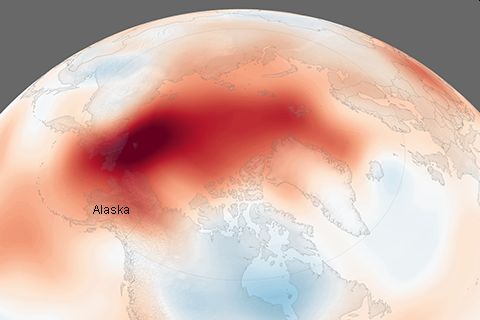
20 June 2019. Alaska Birding with PIB: Arrive in Nome
Because the Arctic is warming twice as fast as the rest of the planet, Alaska copes with climate change every day.
Record heat waves, low sea ice, eroding coastlines, melting permafrost, disappearing lakes, ice-road failures, and declines in fish, bird and wildlife populations. Here are just a few examples of what Alaska is dealing with:
Ice road failures:
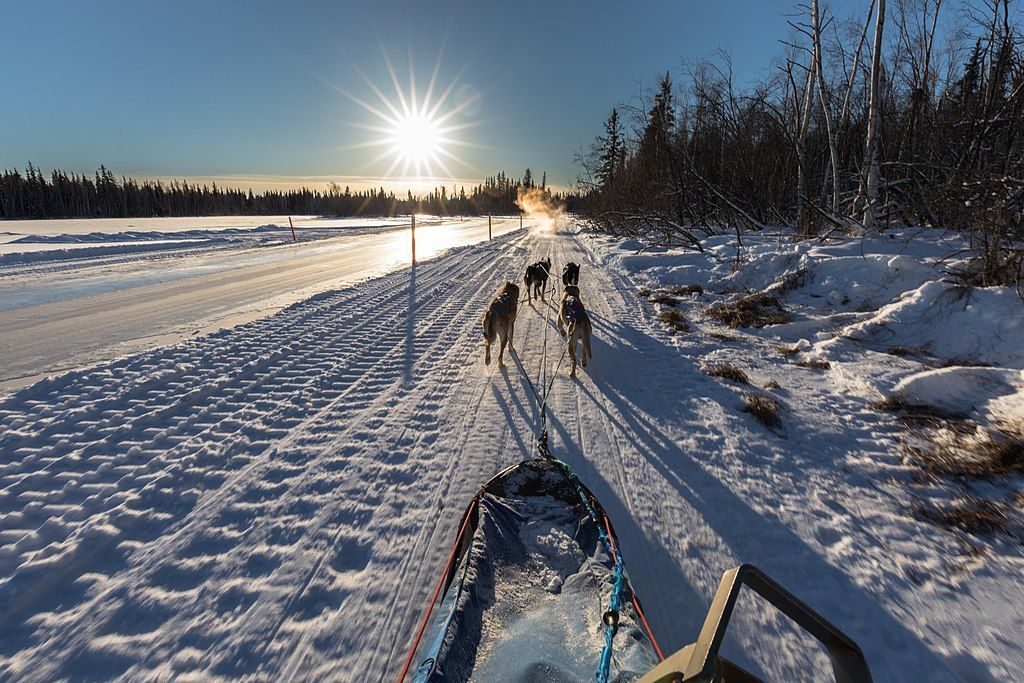
Winter is the time to go places in Alaska when the frozen lakes and rivers become highways, but this year the ice was thin and it broke up earlier than expected. There were accidents at the ice failures, people died, and villages were cut off because the ice is their only road. Every winter the Kuskokwim River becomes a 200-mile ice highway that links 13,000 people in southwestern Alaska. The New York Times described how people cope now that the ice is thin: Alaska Relies On Ice. What Happens When It Can’t Be Trusted?
Lack of sea ice makes a village disappear:
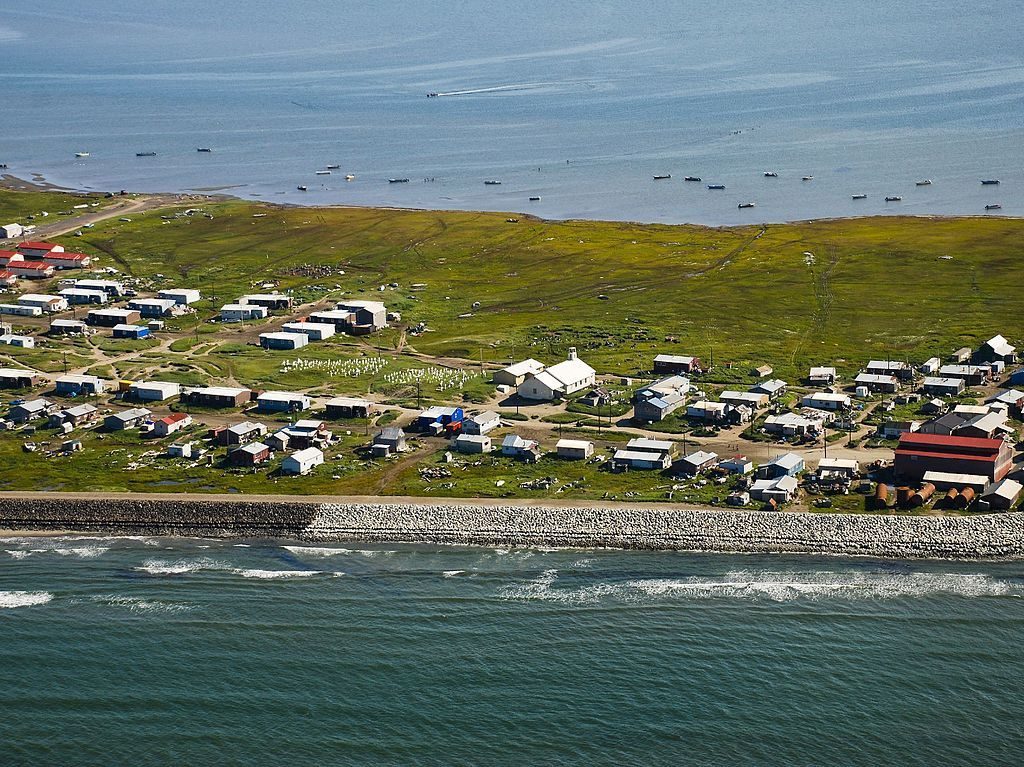
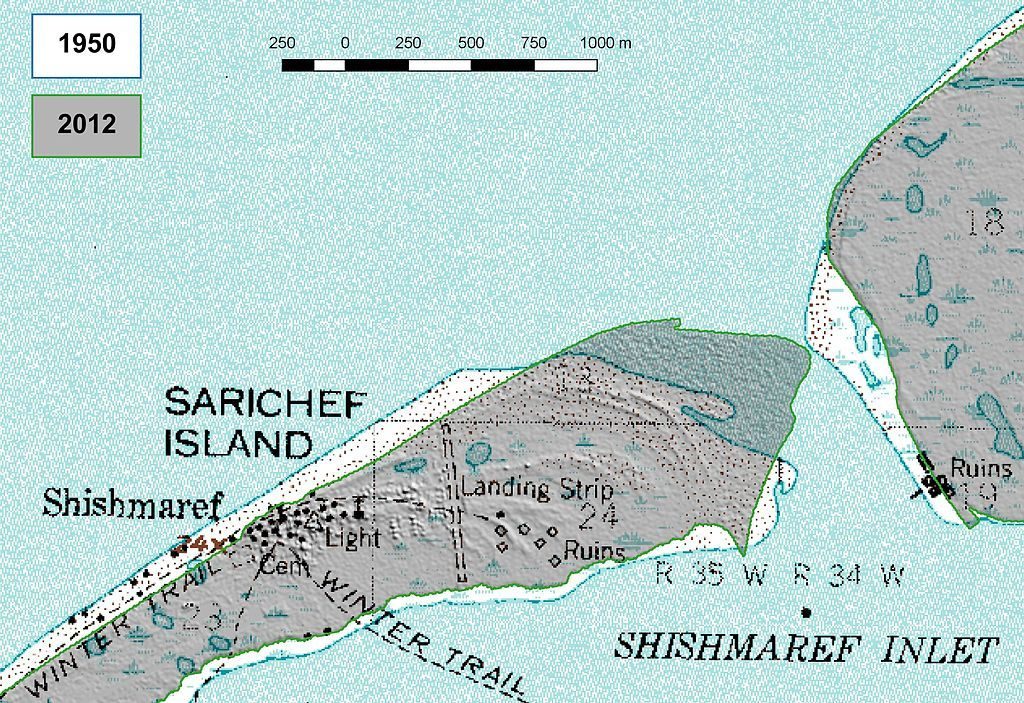
The town of Shishmaref, Alaska is disappearing. Perched on an island in the Chukchi Sea, the sea ice that used to protect it from huge waves in autumn storms is forming too late now to do any good. The new seawall is a only temporary fix. The island is shrinking. In 2016 the villagers voted to leave the island but there’s no money to do it — and so they stay. Read more + video at CNN’s Tragedy of a village built on ice.
Wildlife declines, seabird die-offs:
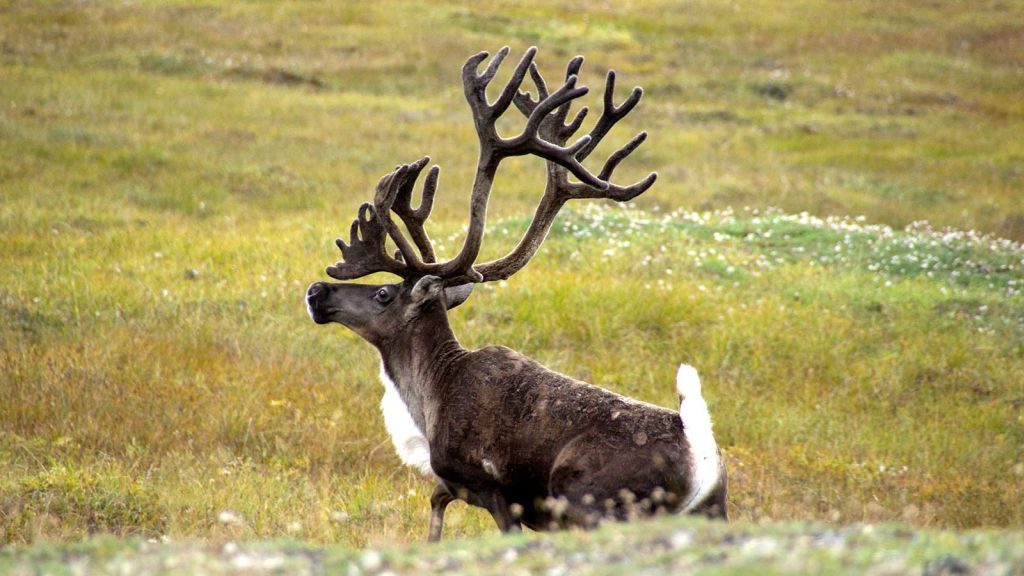
An international study of reindeer and caribou across the Arctic shows that almost all of the herds are in decline: 2018 Arctic Report Card: Reindeer and Caribou continue to decline.
In PLOS One, a recent study of a massive seabird die-off in 2016 indicates that unusually warm ocean temperatures lowered the food supply and lead to starvation for 3,100 to 8,800 seabirds, especially tufted puffins. This group washed ashore at St. Paul Island, Bering Sea in October 2016.
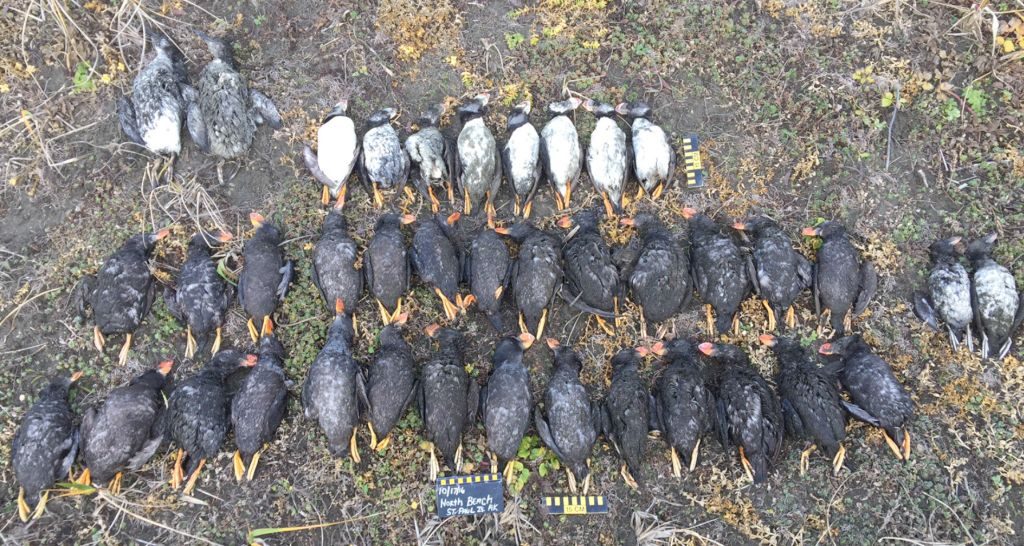
Thawing permafrost, combustible lakes:
Thawing permafrost causes many problems. When the frost melts the land slumps and slides. This slump engulfed trees and created new cliffs.
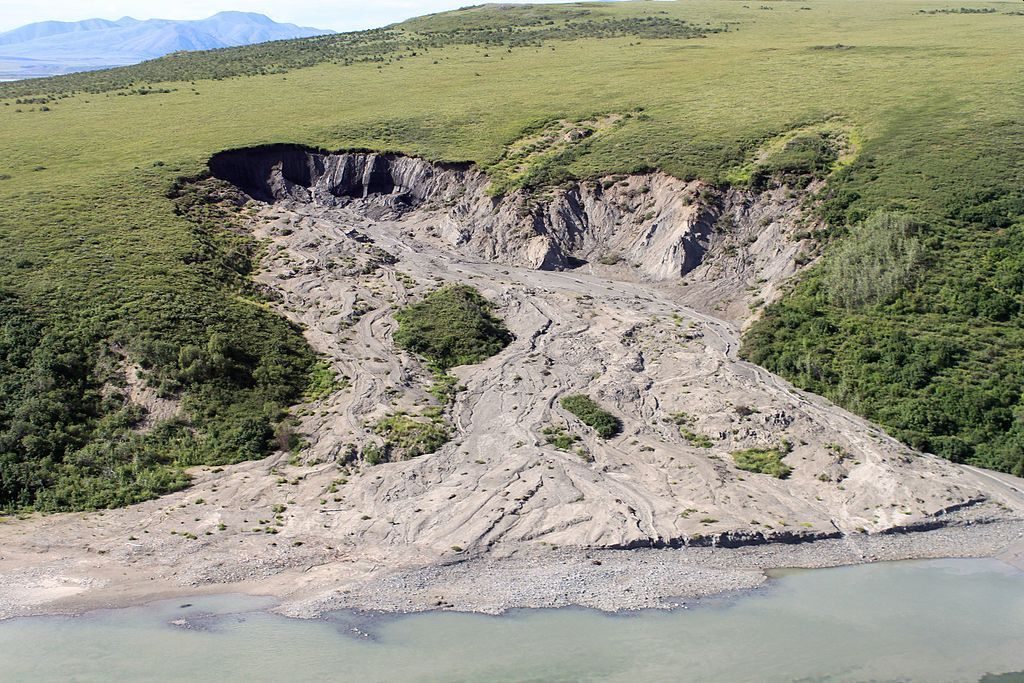
When the land subsidies, trees collapse and die (called drunken trees). The area becomes a bog.
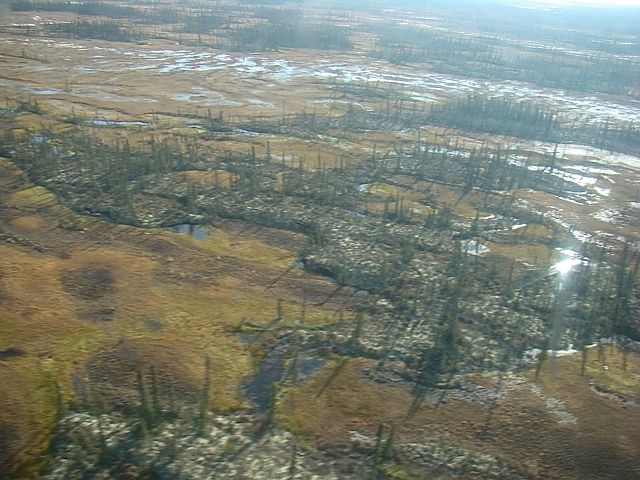
Methane formerly trapped in the permafrost bubbles up in lakes (photo) with potentially explosive results (video).
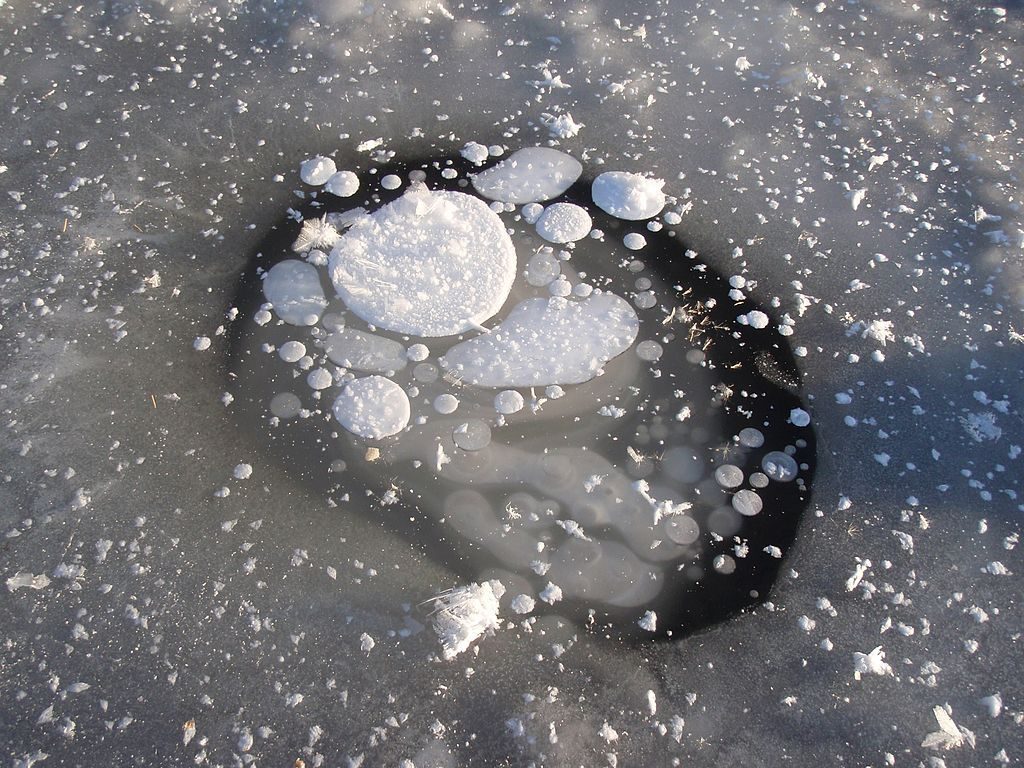
Alaska is experiencing so many effects of warming that it could be a poster child for climate change.
(photos from Wikimedia Commons; click on the captions to see the originals)
p.s. Yesterday on the boat trip at Kenai Fjords National Park we saw some of the glaciers in this news article, especially Northwestern Glacier: https://www.cbsnews.com/pictures/repeat-photography-of-alaskan-glaciers/
Thank you for sharing what you are learning about these devastating effects of climate change, Kate. I hope you will also be able to find examples of communities moving away from fossil fuels while there…